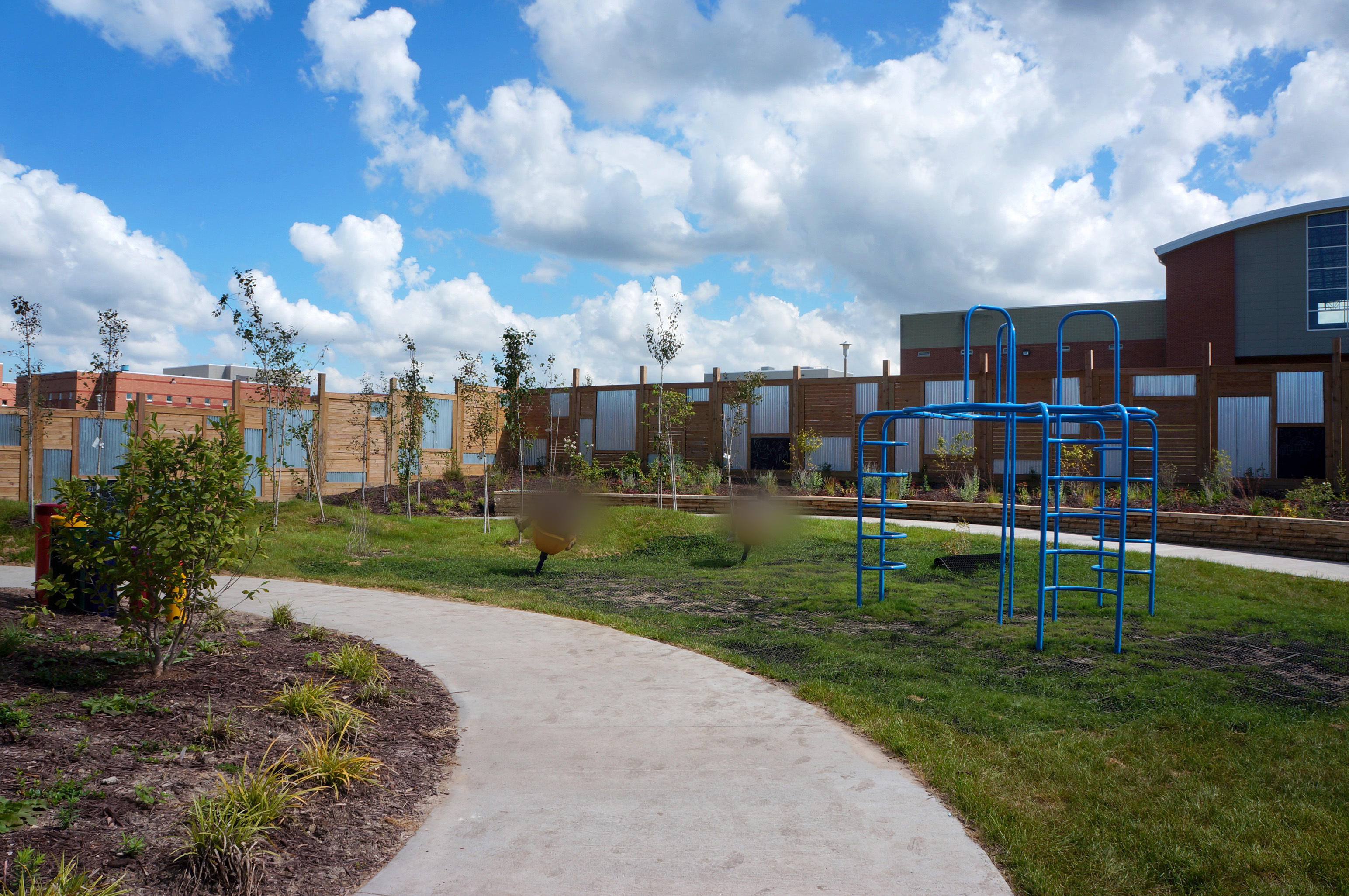
New research shows that a visitor’s garden designed and built by Iowa State University students and incarcerated individuals at the Iowa Correctional Institution for Women is helping to strengthen connections between the women and their children.
Researchers interviewed incarcerated women and their visitors in the visitor’s garden at the institution in Mitchellville.
Ninety percent of those interviewed said the garden made their visit better.
The study, published in the peer-reviewed Journal of Offender Rehabilitation, was co-authored by Julie Stevens, associate professor of landscape architecture in the ISU College of Design; Barb Toews, assistant professor in the University of Washington’s School of Social Work and Criminal Justice; Amy Wagenfeld, lecturer in the Boston University post-professional occupational therapy doctoral program; and Carissa Shoemaker, ISU graduate student in landscape architecture.
The design and construction of the visitor’s garden occurred in spring 2018 during an interdisciplinary option studio led by Stevens. The students worked side by side with incarcerated women and prison staff from the outset to learn more about the challenges of visitation and to gather their ideas for the space. The garden was completed in June 2018.
The garden includes a looped walking path, an open grassy area, plants and shade trees, playground equipment, musical instruments and comfortable seating. It is enclosed with an attractive fence, in which chalkboard panels are installed. Previously the outdoor visiting space was a brick and concrete patio with chain-link and razor wire fencing.
The study found that the garden is impacting visitation in four ways:
- Creation of a child-friendly visit: Visits are now more conducive to “kids being kids.”
- Improved affective experience: Visits are less stressful or boring. Interviewees used words such as “cozy,” “calm” and “fun” to describe their experience in the garden.
- Home-like visiting environment: The “backyard” feel to the garden facilitates natural play and conversations between the incarcerated women and their visitors.
- Improved parent-child relationship: Child visitors are experiencing more visits, longer visits, improved quality of time together, better activities and improved quiet time.
“A recurring theme that we found was the women saying that the garden feels like home or a neighborhood park,” Stevens said. “I can’t imagine too many people have said that prison feels like home, so this was an encouraging finding that I believe is a result of a design process that truly honored the needs of the incarcerated women and their loved ones.

“While this may lead some to wonder if people will want to stay in prison, I can confidently say that no incarcerated individual I have met wants to be in prison, no matter how nice it is.”
Previous research shows that helping those who are incarcerated improves their relationships with loved ones – particularly their children – improves reentry to the community and reduces recidivism. Common comments from visitors who participated in the study were that they looked forward to their next visit, stayed longer and had improved communication with their loved ones.
“For a few hours, they can shed their identity as a prisoner and become mom or grandma,” Stevens said. “Obviously, a garden isn’t solving everything, but it’s doing something that the rest of the prison environment is unable to do.”
Some children spend many hours in a car going to the prison and back to their homes. Previously, the only outdoor option was to sit at a table or bench. Now, with the garden, the children can run around and play, just as they might do in their backyard or at a park.
From the beginning of the design process, several incarcerated women involved said they wanted the garden to feel like a backyard or a park. They understood what the garden needed to be.
This thinking fed into the design of the garden, every aspect of which was done intentionally and grounded in research on therapeutic gardens and attachment theory.
“We’re not looking at people as numbers,” Stevens said. “They’re real people, they have real stories and they have real children who need the love and support of their mom. This garden helps to nourish fractured mother-child relationships.”


Leave a Reply